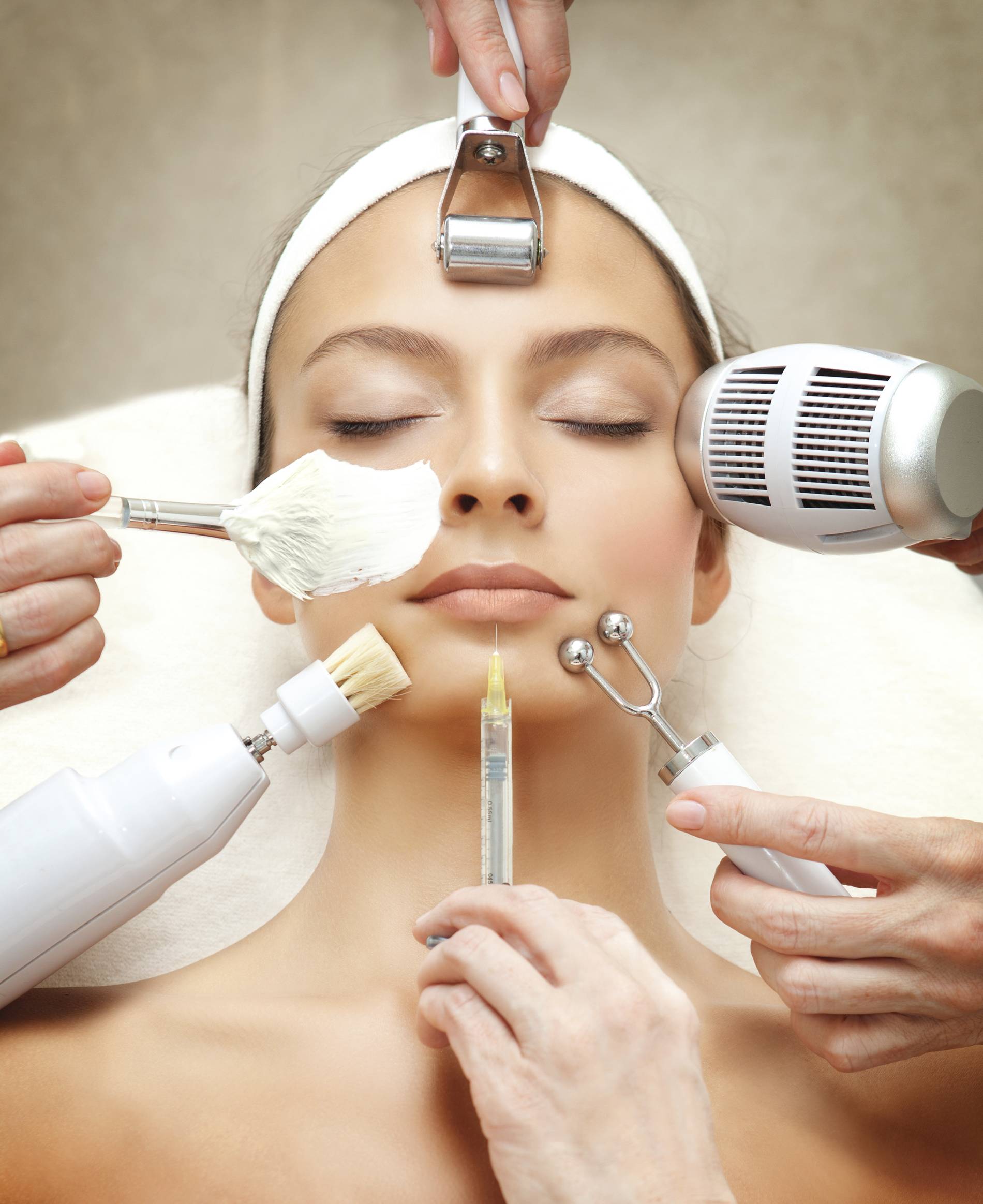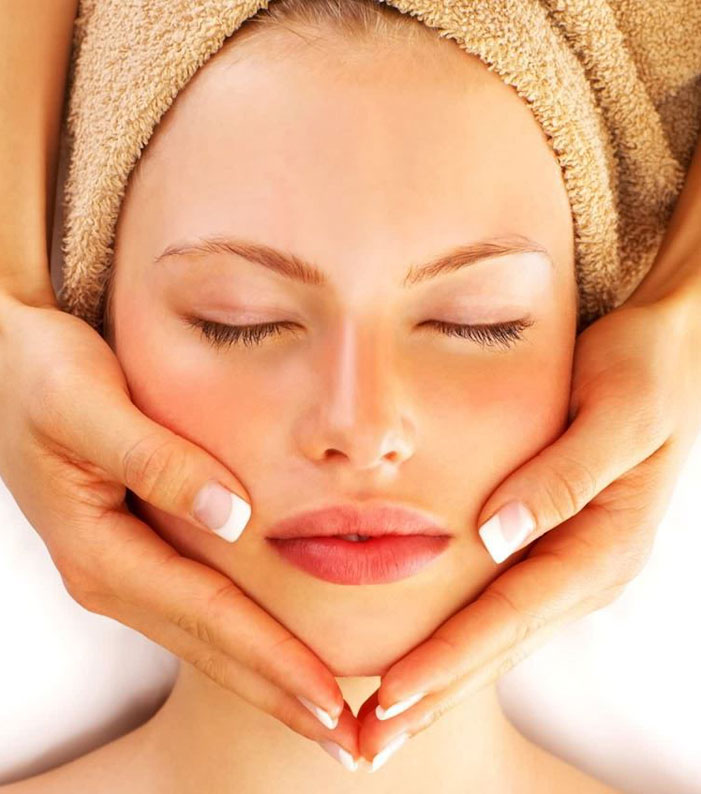For many women, the presence of unwanted facial hair can be a source of significant self-consciousness and frustration. While it's a completely natural occurrence, whether due to genetics or hormonal changes, the desire for smooth, hairless skin is a personal preference that drives countless individuals to seek effective solutions. Thankfully, there are tons of different facial hair removal methods for women available today, ranging from quick at-home fixes to more permanent professional treatments.
Navigating the vast array of options can feel overwhelming. From electric razors to sophisticated laser procedures, each method comes with its own set of benefits, drawbacks, and considerations. This comprehensive guide aims to demystify the process, offering insights and expert advice to help you make informed decisions about the best facial hair removal strategy for your unique needs and preferences. We’ll delve into the causes of facial hair, explore various techniques, and provide practical tips for achieving and maintaining that desired silky smoothness.
Table of Contents
- Why Do Women Experience Facial Hair Growth? Understanding the Causes
- The Emotional Toll: More Than Just Hair
- Temporary Facial Hair Removal Methods: Quick Fixes for Smoothness
- Permanent and Long-Term Solutions: Investing in Lasting Smoothness
- Expert Insights: What Dermatologists and Estheticians Recommend
- Choosing Your Best Facial Hair Removal Method for Women in 2024
- 8 Tips for Smooth, Hairless Skin After Facial Hair Removal
- The Future of Facial Hair Removal for Women: Innovations and Trends
Why Do Women Experience Facial Hair Growth? Understanding the Causes
Before diving into removal methods, it's helpful to understand why facial hair grows in the first place. Facial hair in women can be caused by numerous factors, and it's important to remember that it's a natural part of human biology. For some, it's simply a matter of genetics, passed down through family lines. If your mother or grandmother had noticeable facial hair, you might too.
However, increased or coarser facial hair can also be a sign of underlying hormonal shifts. Hormonal imbalances, particularly involving androgens like testosterone, can trigger increased hair growth, a condition known as hirsutism. Conditions such as Polycystic Ovary Syndrome (PCOS) are common culprits behind such hormonal fluctuations, leading to symptoms like irregular periods, acne, and increased hair growth on the face, chest, and back. Other less common causes can include certain medications, adrenal gland disorders, or thyroid issues. Understanding the root cause can sometimes help in managing the issue, especially if it's related to a treatable medical condition. Consulting with a healthcare professional is always recommended if you notice a sudden or significant change in your facial hair growth.
The Emotional Toll: More Than Just Hair
While facial hair is natural, its presence can have a profound psychological impact on women. It's not just about aesthetics; it's about comfort, confidence, and how one perceives oneself. A 2006 study highlighted this emotional burden, finding that women living with unwanted facial hair reported high levels of anxiety and depression. The study also revealed the significant time commitment involved, with women spending, on average, 104 minutes on facial hair removal and maintenance every week. This translates to nearly two hours each week dedicated to managing something that, for many, feels like a constant battle.
This data underscores why finding an effective and comfortable facial hair removal method is so crucial. It’s about more than just vanity; it’s about improving quality of life, reducing stress, and reclaiming precious time. Whether you choose to remove facial hair due to personal preference or to discourage growth, recognizing the emotional aspect validates the search for the best solutions.
Temporary Facial Hair Removal Methods: Quick Fixes for Smoothness
For those seeking immediate results without long-term commitment, temporary methods offer versatile and accessible options for facial hair removal. These techniques are ideal for routine maintenance and can be performed at home or in a salon, providing smooth skin for days to weeks, depending on the method.
Shaving: Dispelling the Myths
Perhaps the most straightforward and widely accessible method, face shaving is perfectly okay for women. Contrary to the persistent myth, your facial hair won’t grow back thicker if you shave it. This misconception arises because when hair is cut straight across, the blunt tip can feel more stubbly than the naturally tapered end of an unshaved hair. However, the hair follicle itself isn't altered, meaning the actual thickness or growth rate remains unchanged. Dermatologists confirm that shaving is a safe and effective way to remove peach fuzz or even thicker facial hair.
The best facial hair removal razors for women include electric, disposable, and straight razors. Electric razors offer convenience and often reduce the risk of nicks, while disposable razors are practical for travel. Straight razors, or specialized facial razors, provide a very close shave, often used in conjunction with dermaplaning. Shaving is painless (if done correctly) and can be done quickly, making it an excellent daily or every-other-day option for maintaining smooth skin.
Dermaplaning: Exfoliation and Hair Removal in One
Dermaplaning has gained immense popularity not only as a facial hair removal method but also as an exfoliation technique. To remove facial hair, dermaplaning involves using a sterile, surgical-grade scalpel to gently scrape off the top layer of dead skin cells and vellus hair (peach fuzz) from the face. This process leaves the skin incredibly smooth, allowing makeup to apply flawlessly and skincare products to penetrate more effectively.
While it sounds intimidating, when performed correctly by a professional or with careful technique at home using specialized dermaplaning tools, it's quite safe. We talked with top experts in the field, from dermatologists to estheticians, to get the lowdown on everything from how to properly dermaplane your face. They emphasize using a clean, sharp blade and holding the skin taut to prevent nicks. Like shaving, dermaplaning needs to be performed routinely to keep up with the result, typically every 3-4 weeks as new hair grows and dead skin accumulates.
Waxing: The Art of Smoothness
Waxing is a popular choice for facial hair removal because it pulls hair directly from the root, resulting in smoother skin for a longer period, typically 2-4 weeks. The art of waxing, unsurprisingly, involves applying either hard or soft wax to remove facial hair. Soft wax requires a strip to remove, while hard wax hardens on the skin and is pulled off directly.
Gina Petak, an education manager at the European Wax Center, tells Bazaar that wax is an effective method for removing hair from various areas of the face, including the upper lip, chin, eyebrows, and sideburns. While waxing can be painful, especially for first-timers or those with sensitive skin, the results often justify the discomfort. Regular waxing can also lead to finer, sparser hair growth over time. Many excellent wax kits are available for at-home use, but for larger areas or sensitive skin, a professional esthetician is often recommended to minimize irritation and ensure proper technique. These are among the best facial hair removal products we tested, including wax kits, reviewed by testers, dermatologists, and skin experts.
Tweezing & Epilators: Precision and Endurance
Tweezing is ideal for removing sparse, coarse hairs, like those on the chin or between the eyebrows. It offers precision, allowing you to target individual hairs. However, it's time-consuming for larger areas and can be painful. For those seeking a more efficient root-removal method than tweezing but less messy than waxing, epilators are an excellent option.
Epilators are electric devices with rotating tweezers that grasp and pull out multiple hairs simultaneously. The best epilators for facial hair removal, with expert dermatologist guidance, real reviews, and honest testimonies from Bazaar's beauty editors, highlight their effectiveness for achieving smooth results that last for weeks. While the initial sensation can be intense, many users report that it becomes less painful with repeated use. Devices like the Finishing Touch Flawless Women's Painless electric facial hair removal device are praised for being portable and perfectly sized for navigating small areas of the face, though some may not be powerful enough to combat super thick or coarse hairs. Another example is the rechargeable electric painless facial hair remover for face, lip, and chin, which boasts a 4.3 out of 5 stars rating from over 16,000 reviews, making it a popular and trusted choice for convenient at-home use.
Permanent and Long-Term Solutions: Investing in Lasting Smoothness
For women seeking a more permanent reduction in facial hair, advanced techniques offer a long-term solution, significantly reducing the need for frequent temporary removal methods. These methods target the hair follicle itself, inhibiting future growth.
Laser hair removal stands out as the most popular and effective long-term solution. Experts break down face hair removal, including temporary methods like dermaplaning to more permanent techniques like laser hair removal. Laser treatment works by emitting concentrated light into hair follicles. The pigment in the follicles absorbs the light, which destroys the hair. This process requires multiple sessions, typically 6-8, spaced several weeks apart, as hair grows in cycles and the laser is most effective on hair in its active growth phase. While it doesn't guarantee 100% permanent removal, it offers a significant and lasting reduction in hair growth. Many women appreciate the precision these treatments offer and the gradual reduction in hair growth over time.
It's important to note that your results may depend on your skin and the type of hair you use it on. For example, coarse leg hair and downy facial hair may have different outcomes. Laser hair removal is most effective on dark hair against light skin, as the laser targets pigment. For individuals with light hair (blonde, red, gray) or darker skin tones, other options like electrolysis might be more suitable. Electrolysis is another permanent method that uses a fine probe to deliver an electric current directly into each hair follicle, destroying it. It's a meticulous process, but it's effective for all hair and skin types.
While these methods require a greater upfront investment in terms of cost and time, the long-term benefits of significantly reduced hair growth and maintenance often make them a worthwhile consideration for many women for their facial hair removal journey.
Expert Insights: What Dermatologists and Estheticians Recommend
When it comes to facial hair removal for women, seeking advice from qualified professionals is paramount, especially given the sensitive nature of facial skin. We talked with top experts in the field, from dermatologists to estheticians, to get the lowdown on everything from how to properly dermaplane your face to the best epilators, facial razors, and laser treatments. Their collective wisdom emphasizes safety, efficacy, and personalized care.
Dermatologists often stress the importance of understanding the underlying cause of facial hair, particularly if it's a new or rapidly increasing issue, as it could signal a hormonal imbalance requiring medical attention. They also provide guidance on preventing common issues like ingrown hairs, hyperpigmentation, and irritation, which can arise from improper hair removal techniques. For instance, they advocate for gentle post-removal care, including soothing balms and sun protection, especially after methods like waxing or dermaplaning that can make the skin more vulnerable.
Estheticians, on the other hand, bring practical expertise in performing various treatments and recommending suitable products. They are adept at assessing skin type and hair texture to suggest the most appropriate method, whether it's a specific type of wax or the right setting for an epilator. Their hands-on experience ensures techniques are applied correctly, minimizing discomfort and maximizing results. From shaving to laser hair removal, experts weigh in on each hair removal method, providing balanced perspectives on their pros and cons. Their guidance is invaluable for navigating the complex world of facial hair removal, ensuring that women make choices that are not only effective but also safe for their skin health.
Choosing Your Best Facial Hair Removal Method for Women in 2024
With so many options available, deciding on the best facial hair removal method for women can feel like a daunting task. These are the best facial hair removal methods for women in 2024, including the best wax kits, razors, dermaplaners, and lasers to get rid of facial hair, but the "best" truly depends on your individual circumstances. There isn't a one-size-fits-all answer to "What is the best hair removal for women's facial hair?"
Consider the following factors when making your choice:
- Hair Type: Is your facial hair fine "peach fuzz" or coarse and dark? Fine hair might respond well to dermaplaning or electric razors, while coarse hair might require waxing, epilation, or laser treatment.
- Skin Sensitivity: Do you have sensitive skin prone to redness or breakouts? Shaving or specific electric devices might be gentler than waxing.
- Pain Tolerance: Some methods, like waxing and epilation, can be painful, especially initially. Shaving and electric trimmers are generally painless.
- Desired Longevity: Do you need a daily solution or something that lasts for weeks or even months? Temporary methods require routine performance, while laser offers long-term reduction.
- Budget: At-home methods like shaving and tweezing are very affordable. Waxing kits are moderately priced, while professional waxing and laser hair removal represent a significant investment.
- Time Commitment: How much time are you willing to dedicate to removal and maintenance each week?
Our top picks for the best facial hair removal methods generally align with what testers, dermatologists, and skin experts review and recommend, emphasizing effectiveness, safety, and user satisfaction. It's often a process of trial and error to find what works best for you, but armed with knowledge about each method, you can make a more informed decision.
8 Tips for Smooth, Hairless Skin After Facial Hair Removal
Achieving smooth, hairless skin isn't just about the removal method itself; it's also about proper preparation and aftercare. If you’re bothered by the hair that grows on your face, follow these eight tips for smooth hairless skin, minimizing irritation and maximizing results:
- Cleanse Thoroughly Beforehand: Always start with clean skin. Wash your face with a gentle cleanser to remove makeup, oil, and dirt. This prevents clogged pores and potential infections.
- Exfoliate Gently (When Appropriate): For methods like waxing or epilation, gentle exfoliation a day or two before can help prevent ingrown hairs. However, avoid harsh exfoliants immediately before or after removal, especially with dermaplaning.
- Use Sharp, Clean Tools: Whether it's a razor, epilator, or dermaplaning tool, ensure it's sharp and thoroughly cleaned or sterile. Dull blades cause irritation and nicks, while dirty tools can lead to breakouts.
- Follow Instructions Carefully: Especially for at-home wax kits or epilators, read and follow the manufacturer's instructions to ensure safe and effective use.
- Soothe Your Skin Immediately After: Apply a soothing, alcohol-free toner, aloe vera gel, or a calming serum to reduce redness and irritation. Avoid heavy creams or products with strong fragrances immediately after.
- Moisturize Regularly: Keeping your skin hydrated helps maintain its barrier function and prevents dryness, which can exacerbate irritation or make hair removal more difficult in the future.
- Protect Your Skin from the Sun: Freshly hair-removed skin, especially after waxing or dermaplaning, is more susceptible to sun damage. Always apply a broad-spectrum SPF 30 or higher, even on cloudy days.
- Be Consistent (for Temporary Methods): Note these methods will need to be performed routinely to keep up with the result. Regular maintenance prevents hair from becoming too long or coarse, making subsequent removals easier and less painful.
The Future of Facial Hair Removal for Women: Innovations and Trends
The landscape of facial hair removal for women is continuously evolving, driven by technological advancements and a growing demand for more convenient, effective, and less painful solutions. While traditional methods like shaving, waxing, and tweezing remain staples, we're seeing exciting innovations that promise to make the process even smoother.
One notable trend is the miniaturization and increased efficacy of at-home devices. Portable electric facial hair removal devices, like the "Flawless" model or rechargeable options, are becoming more powerful and precise, making professional-level results more accessible from the comfort of one's home. These devices are designed to be painless and discreet, perfect for touch-ups or navigating small facial areas.
Furthermore, advancements in laser and IPL (Intense Pulsed Light) technology are making these long-term solutions safer and more effective for a wider range of skin tones and hair colors, though professional consultation remains crucial. Research into topical creams that discourage hair growth is also ongoing, offering the potential for non-invasive solutions in the future. As science progresses, we can anticipate even more personalized and efficient facial hair removal options, further empowering women to manage their appearance in ways that best suit their lifestyles and preferences.
Conclusion
The journey to achieving smooth, hairless skin is a deeply personal one, influenced by genetics, hormones, and individual preferences. As we've explored, there are abundant facial hair removal methods for women, ranging from the temporary convenience of shaving and dermaplaning to the longer-lasting results of waxing and epilation, and the significant reduction offered by laser hair removal. Each method presents its unique set of advantages and considerations regarding pain, cost, longevity, and suitability for different skin and hair types.
Remember, the "best" method is ultimately the one that aligns with your needs, comfort level, and lifestyle. Don't hesitate to consult with dermatologists or estheticians, as their expert guidance can be invaluable in navigating these choices safely and effectively. Ultimately, whether you choose to embrace or remove your facial hair, the power to decide lies with you. We hope this comprehensive guide empowers you with the knowledge to make informed decisions on your path to confident, silky-smooth skin. What has been your experience with facial hair removal?


